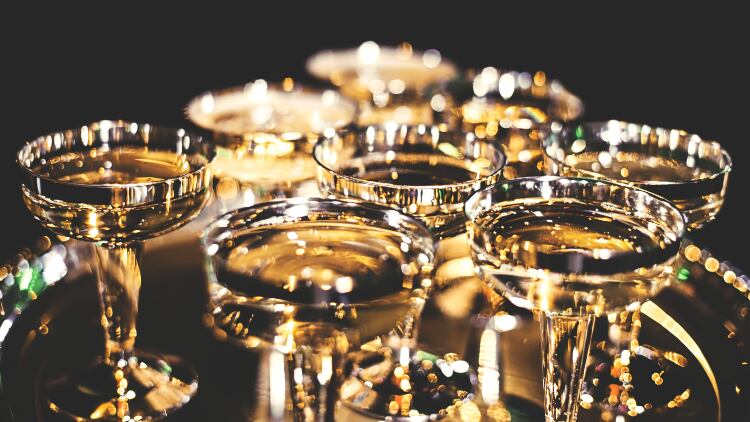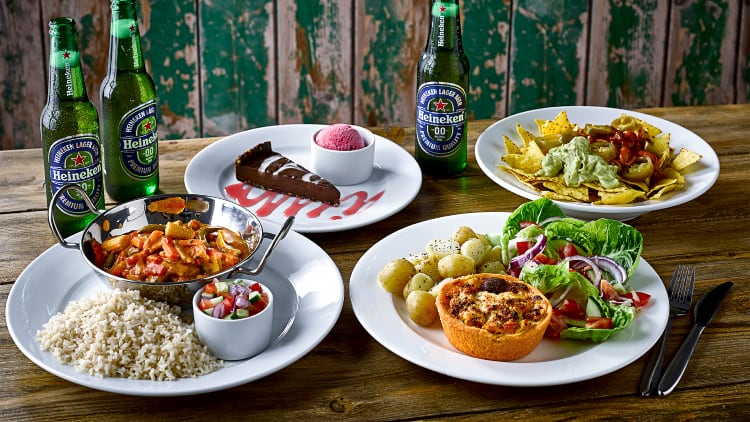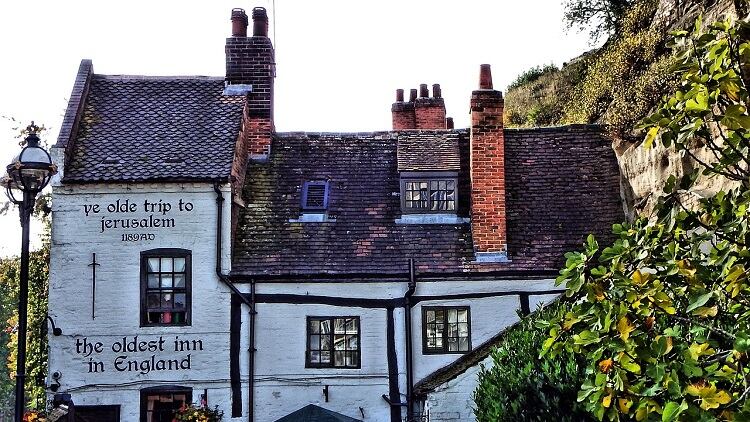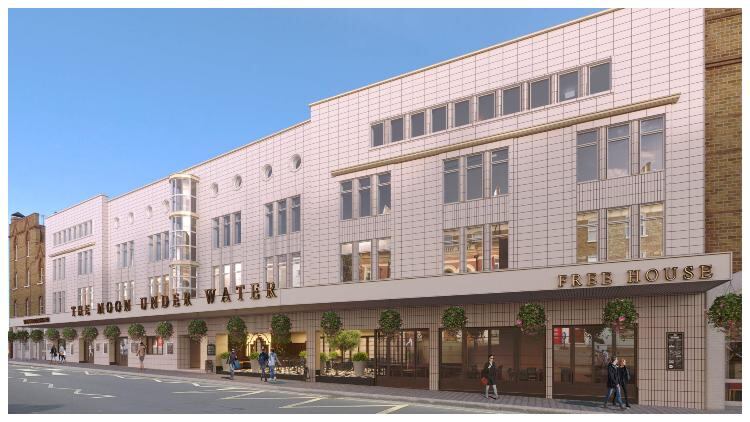Keeping your finger on the pulse with a current drinks menu can ensure you’re up to date with the ever-evolving consumer. Therefore, understanding the needs of your customers will help you walk into the new year undaunted.
William Grant & Sons UK and Ireland managing director Neil Barker says the producer’s new Trending 2020 report reveals that “consumers continue to expect the brands they engage with to go the extra mile for them, meaning brands must work harder to establish real connections with customers in the year ahead”.
So, what should you watch out for in the new year?
There have been rumblings that gin will eclipse vodka as the UK’s biggest spirits category in time for the new decade – and the statistics show that is likely to be the case.
Vodka’s crown under threat?
According to the Trending 2020 report, gin grew in value by 45.4% in the year to June 2019 in the UK, during which time its net contribution across the on and off-trades was £2.4bn.
Vodka, on the other hand, sunk 3% in value and 6.8% in volume in the UK’s on-trade top spirits category, according to the report. If these growth rates continue – as they are expected to – by June next year, the once stereotyped clear, bitter spirit reserved for a niche few, will overtake vodka as the biggest category.
CGA’s director of client services for drinks Jonny Jones says: “From value brands to artisan distilleries, the category is booming to the point where consumers now drink gin out-of-home more often than vodka.
“They are becoming ever more adventurous and experimental in their purchases, which makes it vital for suppliers and operators alike to obtain the sharpest insights into the latest trends and market preferences.”
In order to meet the overwhelming demand of gin palates, a staggering 402 new gin brands have entered the market since May 2016, 367 of which are premium brands, according to the Trending 2020 report.
But could this ever-increasing growth finally burst the bubble of the category?
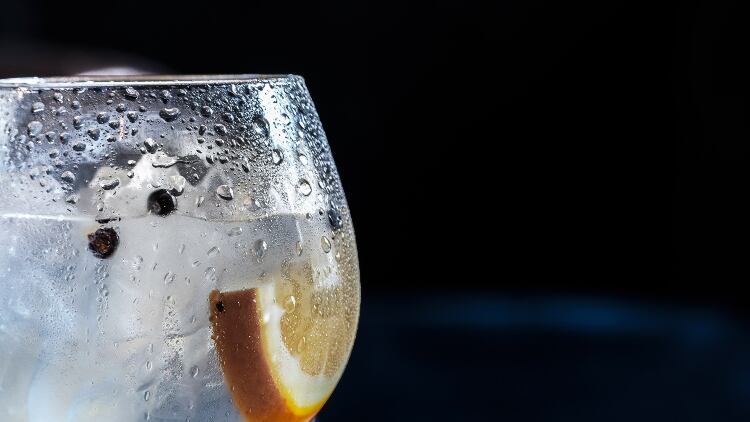
Popping the gin bubble
While this cumulative choice is good news for the category, it could be less beneficial to the consumer. With so many players at hand, it makes it difficult for customers to decide what brand to opt for, resulting in the products fighting to win over the discerning gin consumer.
Star Pubs & Bars spirits category buyer Ben Ko-Nkengmo says: “Premium gins are now so numerous that there’s a risk of choice overload for customers, leading them to either opt for the reassurance of familiar brands or to ‘double trade-up’ to super-premium products in the year ahead.”
Warner Edwards Distillery director Tom Warner says: “It’s confusing for consumers and people are getting away with murder as a result.
“It’s disingenuous for the consumer and there’s a worry that this will turn them away from the category in the upcoming year.”
So what is next for gin? Has it reached its peak? Will it survive in today’s overcrowded market?
Both Ko-Nkengmo and Warner agrees that gin is likely to soar as the UK’s best-selling spirit in 2020 – with flavoured extensions pushing the category to greater heights.
However, Warner says that, in the new year, the on-trade may see levels of rationalisation.
He explains: “Certain on-trade retailers in the UK are definitely talking about reductions of about 50% of their gin range next year.
“While 2018 was the summer of ‘let’s list every gin that we can across the on-trade and the off-trade’, I think a lot of on-trade sites are realising that it’s probably not the most sensible use of the back bar.
“As humans, we like to explore but we also like to know what we’re buying. Gin was initially driven at by lots of small, new producers and that gave it authenticity and legitimised the entire category as a quality offering.
“But now, with the number of products that have been launched, there’s not a lot of provenance behind it and they’re serving the same purpose as brands that have always been there.
“So as a result, there’s a lot of wallpaper in the category.”
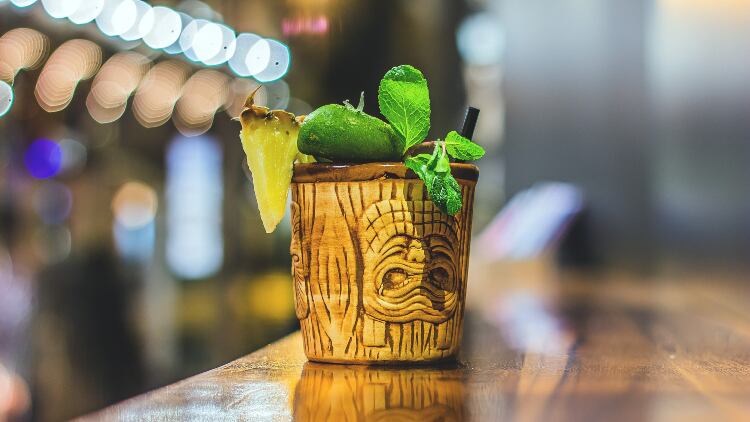
Rum renaissance
While gin stole the headlines in 2018, emerging categories of Irish whiskey and flavoured/spiced rums have also seen double-digit growth with the discerning gin drinkers even showing signs of stepping into the world of dark spirits.
Although the rum market grew by just 1% in the past 12 months, the Wine & Spirits Trade Association (WSTA) said there are signs the category is evolving.
In total, UK consumers bought 35m bottles of rum in the 12 months to June 2019, worth £1bn with a third of these sales taking place in the on-trade.
Coca-Cola European Partners senior trade communications manager Amy Burgess says: “This rum revival is a key opportunity for operators looking ahead to 2020.
“Venues should ensure they are well stocked with a wide range of premium and artisan rums, adding new rum cocktails to their menus, and making sure they offer an extensive range of mixers.”
New World Trading Company head of bars Kelly Harrison says: “Rum has been growing steadily in 2019 and I really hope it pushes on and challenges gin as the top-selling spirit in 2020.
“It would be great to see some of the premium rums really make a hit on the market as general consumers become more knowledgeable about the products they choose to drink.”
Bacardi on-trade director Steve Young says: “Bacardi Spiced is on fire. It led the rise of the spiced category in the UK in 2019 and now, thanks to double-digit growth, spiced and flavoured rum represents nearly 50% of total rum sales in the UK.
“This growth is set to continue as consumers explore the category further as is the growth of interest in premium rum.”
UK consumers bought more than 10m bottles of flavoured or spiced rum in the off-trade – a rise of 6% in volume, which the WSTA predicts will be the largest off-trade category of rum within the next 12 months.
For the on-trade, the WSTA said Brits’ willingness to experiment with new cocktails on nights out, which helped gin to become so popular, is giving rum the same boost.
WSTA chief executive Miles Beale says: “There are signs consumers are starting to become more adventurous when it comes to trying new rums.
“British consumers’ willingness to explore new drink experiences helped with the initial gin boom and we are starting to see some segments of the rum category benefit from a similar impact.
“It’s hard to make a case for anything other than 2019 being a year for gin but, maybe in 2020, we will see rum pulling all the punches as the new rising star of spirits.”
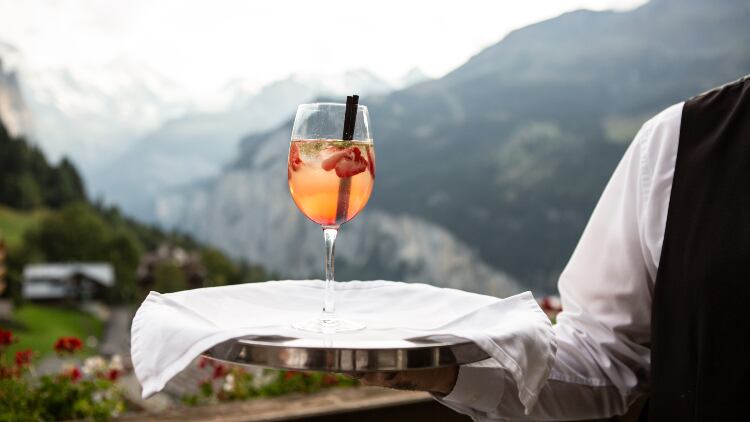
The finer things
The evolution of the consumer reflects an upward shift in spending more on meaningful experiences – which is driving premiumisation in the spirits industry.
Almost nine out of 10 (86%) consumers are likely to treat themselves to small indulgences in the next 12 months, showcasing the continued upward trend of premium and luxury brands in key spirits category performance across the on and off-trade, according to the William Grant & Sons’ Trending 2020 report.
Generally, premiumisation is presenting a huge opportunity for operators as more consumers look for more luxurious experiences when they go out. CGA senior client manager Paul Bolton says: “People might not be going to the pub a few times a week for a pint, but when they do, they want a premium experience and will spend more.
“So, we’ve seen the huge success of spirits, especially gin, and we can see the same effect in beer. It’s happening across the board.”
Heineken UK category and trade marketing director Jerry Shedden says premiumisation is doing wonders for the beer category too.
It is predicted to add £72m incremental value to the category over three years and drive £380m extra cash sales through the tills, according to CGA MAT 15 June 2019.
He says: “Outlets are rationalising their classic lager range in favour of sessionable and quality premium 4% ABV brands, such as Amstel – one of the fastest- growing beers.
“These beers are contributing an extra 30p per pint in the tills and are growing at 11% annually.
“However, it’s important not to remove classic lager, like Foster’s, altogether because it still accounts for 55% of all draught lager volume – only the most premium outlets should consider starting their lager range with premium 4% to drive value.”
Adding a sparkle
While wine sales are dropping for some bars, pubs and restaurants, there are encouraging signs that the tide may be turning as the category is seeing spurts of growth from other areas within it.
Everywhere you look, sparkling wine sales are growing with the category just breaking the £1bn barrier for the first time, according to CGA research.
Firing this growth is prosecco, which accounts for 70% of sparkling’s volume, and has seen value sales soar by 25.6% in the past year.
The rising popularity of fizz means sparkling wine is well placed for further growth. Innovation in spritz serve and the ‘Instagrammable’ effect may give wine the kick start it needs. Also, following the path of the roaring pink gin, prosecco rosé could become one of the big drinks trends in 2020.
Star Pubs & Bars wine category buyer Roberta Neave says: “The success of sparkling is widely recognised to be propping up the wine category and, bit by bit, there is growth beyond prosecco.
“Prosecco has opened up the sector, making it more affordable to pop a bottle of sparkling and stimulated interest in the wider category.
“In 2020, we’ll see customers exploring further with English sparkling, sparkling rosé, cava and crémant are all set to benefit as well as more premium proseccos such as DOCG and organic varieties.”
While drinkers have decreased their consumption of wine in the past couple of years, there is greater interest in more expensive choices.
CGA data indicates that sales of still wines in the managed sector, priced at £35 a bottle and above, have significantly increased their market share in recent times.
Also, more than half (52%) of wine consumers say they are willing to upgrade their choices when drinking out of home, according to Global Origins Wine Insight report from CGA in association with The Buyer.
CGA senior wine category development manager Mark Newton reveals: “The value end of the wine market is still hugely important, with one in four drinkers typically opting for the cheapest or second cheapest option on the list.
“But as consumers extend their knowledge of wine, we see that more and more of them are willing to pay extra for it – so long as the quality is right.”
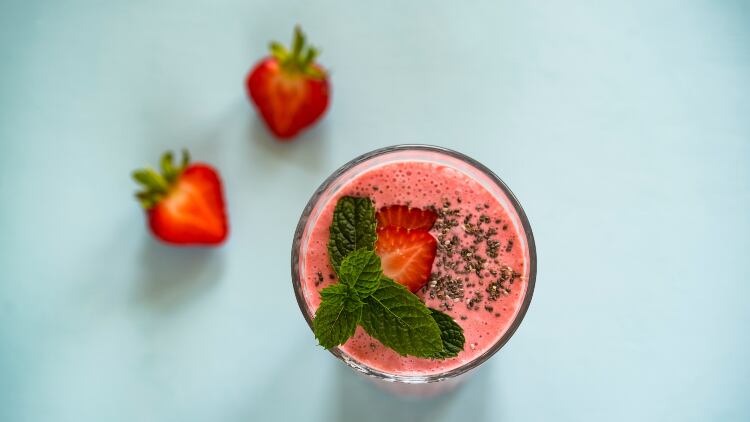
Wellbeing first
Rising demand for low-and-no
Bringing ‘extraordinary Peroni craftsmanship’, Peroni Libera 0% has entered the low and no-alcohol category with the aim of bringing true Italian style to the world of alcohol-free beer, without compromise.
Asahi UK managing director Tim Clay says: “Using years of expertise and skill, Peroni Libera 0.0% was launched in January 2019 and is brewed with specifically cultivated ingredients using the extraordinary Peroni craftsmanship, passion and flair.”
The appetite for low and no-alcohol is predominantly driven by younger adults, with recent data revealing that less than half of students claim to drink alcohol weekly, with a further 12% describing themselves as teetotal, according CGA BrandTrack Report – October 2019.
Clay continues: “As this group of Millennials and Generation Z consumers are just being introduced to the beer market, they are a crucial group for operators to serve.
“Particularly as pub operators work hard to drive loyalty in an ever-crowded market, it is essential to cater to the needs of this new wave of drinkers as 43% of UK adults have actively moderated their consumption in the on-trade, according to CGA research.”
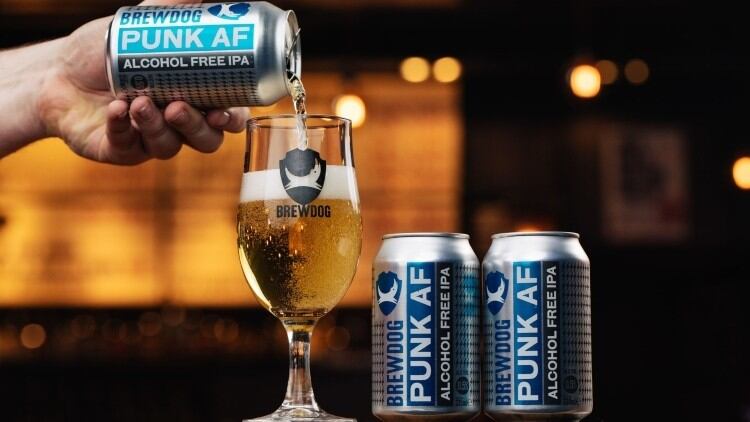
More and more, consumers are putting their wellbeing first and opting for functional or fortified options.
And with that in mind, more than four million people took on the Dry January challenge in 2019, more than ever before, according to Alcohol Change UK.
So, could we see an even ‘dryer’ January in 2020? And could this implement the low-and-no trends further? Of course, the movement of low-and-no is hot news, but 2020 could see the diversification of this segment as it hits new categories, including dark spirits, aperitifs, wines and RTDs.
Beer is currently the leading category in low-and-no, and according to Bibendum’s 2020 Drinks Trend Predictions, next year it could migrate onto draught in the on-trade.
Molson Coors on-trade category controller Mark Bentley says: “Low-and-no still makes up a very small percentage of the overall beer category, just 0.4% of beer volume in the on trade, but growth over the past 12 months has been impressive – growing by 30% year on year.
“What is great is we’re seeing real variety across low-and-no choices now. Particularly expanding into pale ale, where zero options are very flavoursome.
“Palm 0.0%, for example, is a really refreshing amber ale that delivers mild caramel flavours with a honey-like mellowness and, in a blindfold test, you’d be hard pushed to tell that it’s zero percent alcohol.
“Innovations in low-and-no within the craft category have benefited from the more complex taste profile of pale ales, enabling brewers to create the same citrusy, New World hop-style flavour without the alcohol.
“It’ll be interesting to see if 2020 is the year we start to see this sub-category gain real scale.”
Seeking authenticity
According to CGA analysis, 67% of survey respondents are proactively trying to lead a healthy lifestyle, 32% have tried a low-or-no product and, according to Ipsos research, 50% of consumers now moderate their alcohol intake.
Sheddon says: “As a result, the low-and- no category has seen rapid growth and shows no sign of slowing down.
“Low and no-alcohol alternatives are perfect for health-conscious consumers, who still want to feel part of the on-trade occasion, therefore, it’s important that operators offer different options across categories, as well as stocking popular, recognised brands to capitalise on demand.”
So, as brands raise the bar in choice and quality, it appears operators can expect to see high consumer consumption in 2020.
Barker concludes: “People are drinking less but better, seeking out authentic, quality brand experiences that deliver against values that are important to them.
“Innovation in low and no-alcohol serves, clarity on the provenance of premium brands, as well as investment in the experiences that best elevate our brands are just some of the ways in which we will continue to take consumers on an elevated, premium experience journey.”

